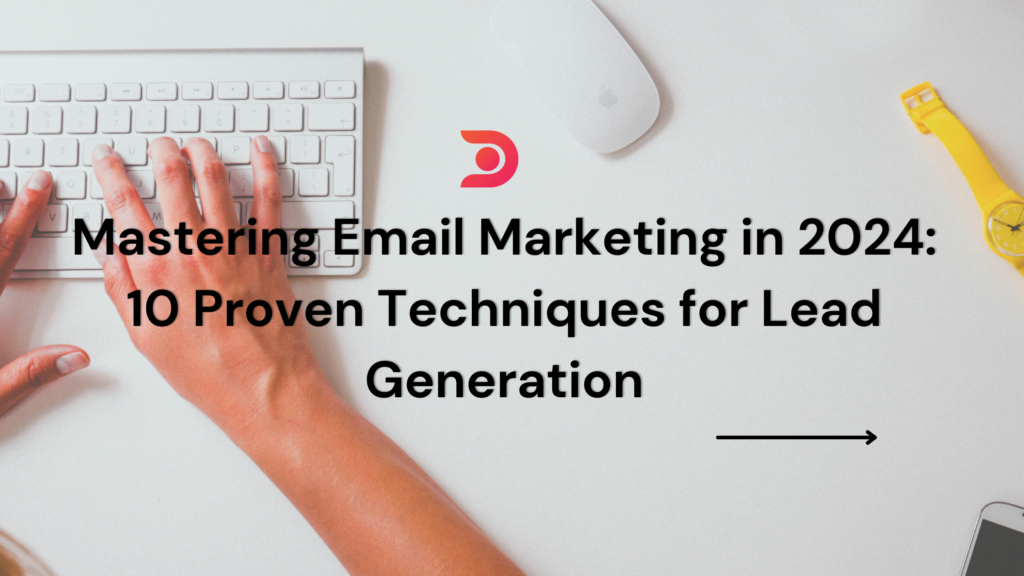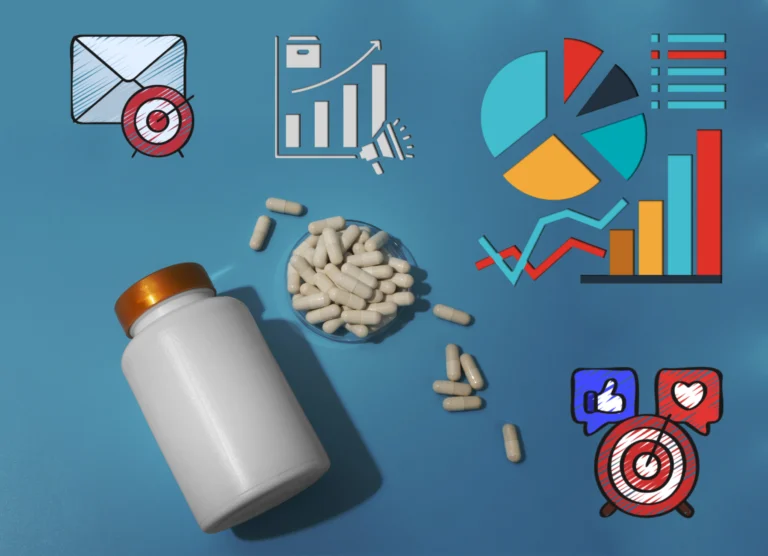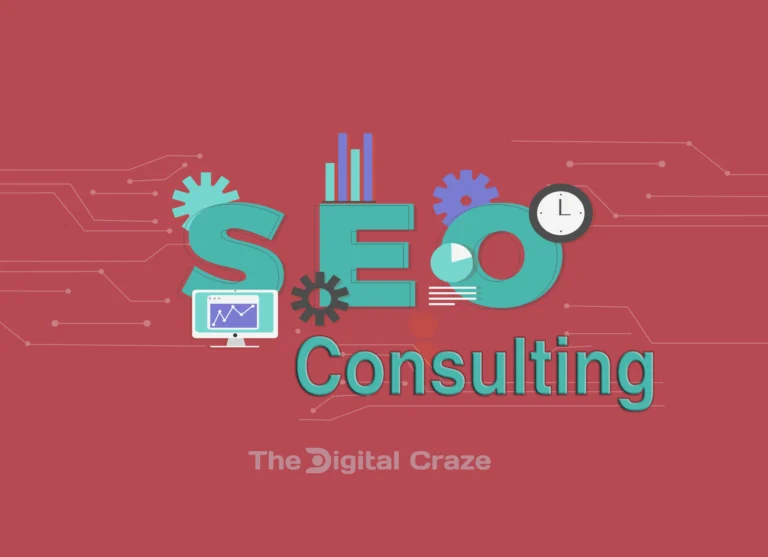
Does email marketing still matter? Definitely! In a crowded digital space, making your emails stand out is key. it’s essential to craft emails that truly resonate with your audience. This in-depth guide dives into 10 powerful techniques for Lead Generation through email marketing in 2024. Learn how to personalize messages, target the right subscribers, and leverage data to create email campaigns that drive engagement and conversions.
Table of Contents:
1. Personalization is Key:
Forget those one-size-fits-all email blasts that used to clutter inboxes. In 2024, personalization is key! Think about it: wouldn’t you rather get emails that feel like they’re written just for you? Marketers are using data and audience segmentation to craft messages that resonate with each person on their list. Imagine seeing your name, getting recommendations based on what you’ve looked at before, or even a friendly reminder about something you left in your cart. Personalized emails grab attention, keep you engaged, and ultimately lead to happier customers (and more sales for you!).
2. Mobile Optimization:
With the majority of emails now being opened on mobile devices, optimizing email campaigns for mobile responsiveness is no longer optional—it’s essential. You must ensure that your email is formatted to display correctly on smaller screens and that all calls-to-action are easily clickable with a thumb. Failure to optimize for mobile not only results in a poor user experience but also risks losing out on potential leads and conversions. Mobile optimization goes beyond simply resizing images and text; it involves creating a seamless and intuitive experience for mobile users, from opening the email to clicking through to the desired action.
3. Interactive Content:
Adding interactive elements to email campaigns can significantly boost engagement and drive conversions. Whether it’s embedding videos, quizzes, or surveys directly into emails, interactive content encourages recipients to actively participate and interact with the message. Not only does this increase the time spent engaging with the email, but it also provides valuable data and insights into recipient preferences and interests. Interactive content transforms passive recipients into active participants, fostering a sense of involvement and ownership in the email communication.
4. Segmentation and Targeting:
Segmentation allows you to divide your email list into smaller, more targeted groups based on demographics, behaviors, or preferences. By sending highly relevant content to segmented audiences, you can deliver messages that resonate with recipients and drive action. Whether promoting specific products to past purchasers or tailoring messaging based on geographic location, segmentation enables you to deliver the right message to the right audience at the right time. Segmentation goes beyond basic demographics to consider factors such as purchase history, engagement level, and stage in the customer journey.
5. Automation and Drip Campaigns:
Automation allows Marketers to streamline their email marketing efforts and deliver timely messages to their audience without manual intervention. Drip campaigns, in particular, are a powerful tool for nurturing leads over time by delivering a series of targeted emails designed to guide recipients through the sales funnel. By automating repetitive tasks and providing personalized experiences at scale, you can save time and resources while driving meaningful results. Automation not only improves efficiency but also ensures consistency and relevance in communication.
6. A/B Testing:
First, this technique as a definition is like running a science experiment for your emails. You create two versions of an email (version A and version B) with just one small difference. Then, you send each version to a random group on your email list. By tracking which version gets better results (opens, clicks, etc.), you can learn what resonates more with your audience and improve your future emails. A/B testing provides valuable insights into recipient preferences and behaviors, allowing you to make data-driven decisions and continuously improve the performance of your email campaigns for maximum impact and ROI.
7. Social Proof and User-generated Content:
Incorporating social proof and user-generated content into email campaigns can help build trust and credibility with recipients. Whether it’s showcasing customer testimonials, product reviews, or user-generated photos, social proof provides tangible evidence of the value proposition and encourages recipients to take action. By leveraging the experiences of existing customers, marketers can instill confidence in potential buyers and drive conversions.
8. Segmented Email Funnels:
Whether it’s raising awareness, nurturing leads, or driving conversions, segmented funnels enable you to deliver the right message to the right audience at each stage of the buying process. By mapping out the customer journey and tailoring messaging accordingly, you can guide prospects through the funnel and ultimately drive conversions. Segmented email funnels allow for more personalized and relevant communication, increasing the likelihood of engagement and conversion at each touchpoint.
9. Data-driven Insights and Analytics:
Numbers don’t lie (and in email marketing, they’re your best friend)! Data and analytics are the secret weapon for unlocking email campaign success. We’re talking open rates, click-throughs, and conversions – all the juicy details that tell you if your messages are hitting the mark. But it gets even better! Advanced analytics tools can crack the code on recipient behavior, revealing their preferences and what makes them tick. Imagine personalizing emails based on real data, not just guesses! This intel lets you refine your campaigns for maximum impact, leading to more sales, happier customers, and a serious ROI boost.
10. Continuous Learning and Adaptation:
The email marketing landscape is a living thing. New technologies emerge, consumer behaviors shift, and fresh trends bubble up all the time. To stay ahead of the curve, you need to be agile and adaptable. This means ongoing education is key. continuous learning also ensures your email marketing strategies remain relevant and effective.

Conclusion:
In conclusion, mastering email marketing in 2024 requires a strategic approach that combines personalization, mobile optimization, interactive content, segmentation, automation, A/B testing, social proof, segmented funnels, data-driven insights, and continuous learning. adopt these proven techniques and stay abreast of the latest trends and developments to generate more leads and sales, nurture relationships, and drive conversions through email campaigns. Email marketing remains a powerful and cost-effective tool for reaching and engaging with audiences.
FAQs:
What makes a good email marketing strategy?
A good email marketing strategy focuses on relevant content, personalized messaging, and clear calls to action.
How can I improve my email campaign?
Improve your email campaign by testing different subject lines, optimizing send times, and segmenting your audience.
What are the 4 types of email marketing?
The four types of email marketing are promotional emails, informational emails, transactional emails, and relational emails.
How can I grow my email list organically?
Grow your email list organically by creating valuable content, optimizing sign-up forms, and promoting your newsletter across channels.



